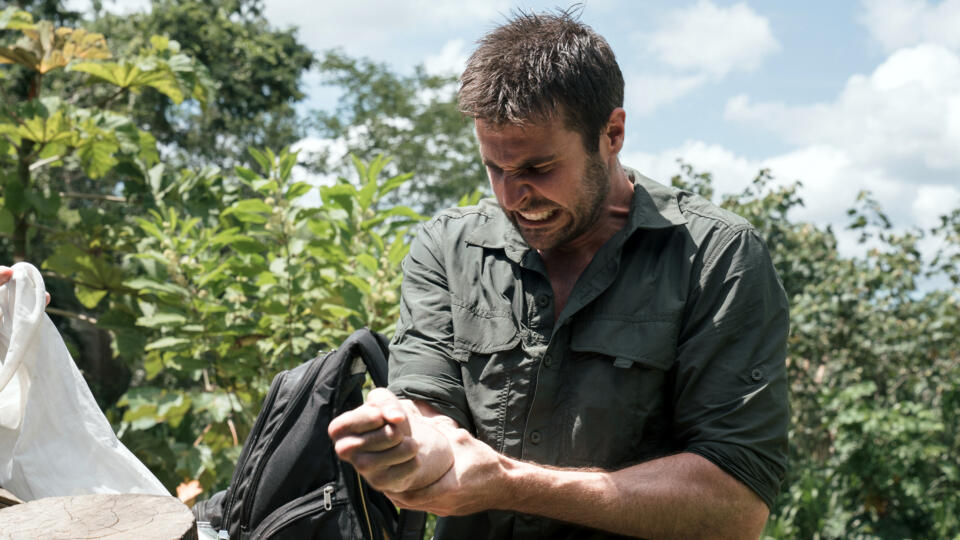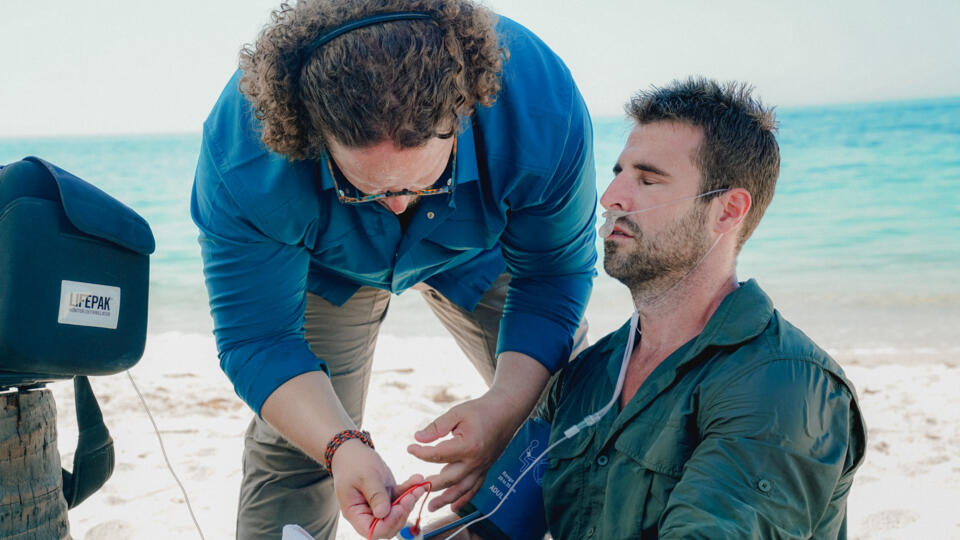Meet the Biting, Stinging Creatures of ‘Kings of Pain’
“Kings of Pain” follows wildlife biologist Adam Thorn and professional animal handler Rob “Caveman” Alleva as they get bitten and stung by some of the most dangerous animals and vicious stinging insects in the world, in order to create a complete and comprehensive pain index that will ultimately help save lives. The series is inspired by the work of University of Arizona entomologist Justin Schmidt, who meticulously began compiling his own, now-famous pain scale four decades ago. Adam and Rob are expanding on Schmidt's work by adding a few qualifiers to the mix, rating the bite of each creature they encounter in three ways: intensity, duration and damage, each on a scale of 1 to 10. Below, see some fascinating facts on each creature and how they rate on the new overall pain scale, which aggregates those three scores:
Episode 1 Bolivia
Warrior Wasp
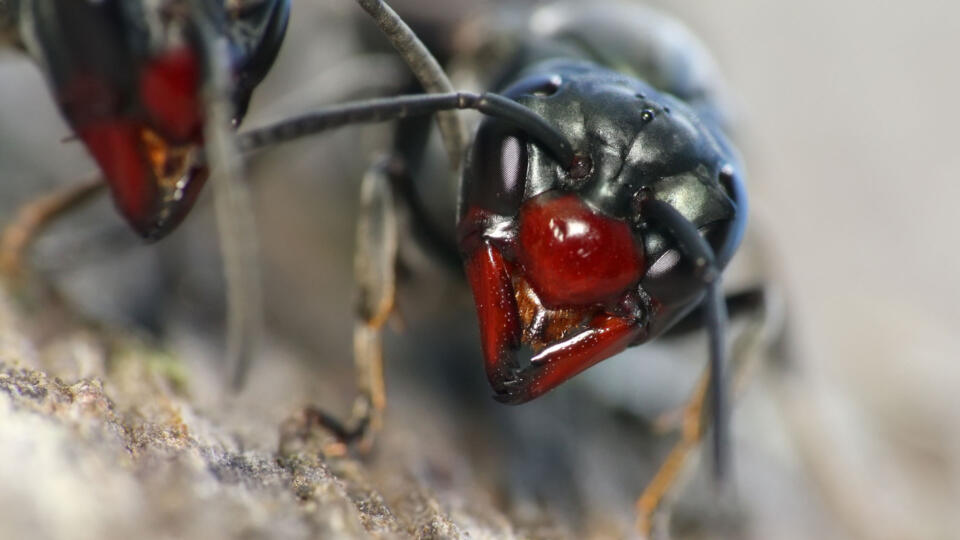
- Warrior wasps are known for aggressive behavior, including threat displays like wing-beating and making a “drumming” by scraping their mandibles on the inside of their nests.
- Warrior wasps are sometimes known as “armadillo wasps” because their nests, which are built attached to tree trunks, look like armadillos’ backs. To defend against predators, the nests have just one or two entry and exit points.
- The venom of the warrior wasp S. Surinama (native to much of South America) has been shown to contain serotonin, the neurotransmitter popularly known for its role in feelings of well-being and happiness. Scientists theorize that when the warrior wasp stings its victim, serotonin falsely signals the victim’s brain to constrict its blood vessels as if it had a serious gaping wound—causing severe pain in the victim.
Executioner Wasp
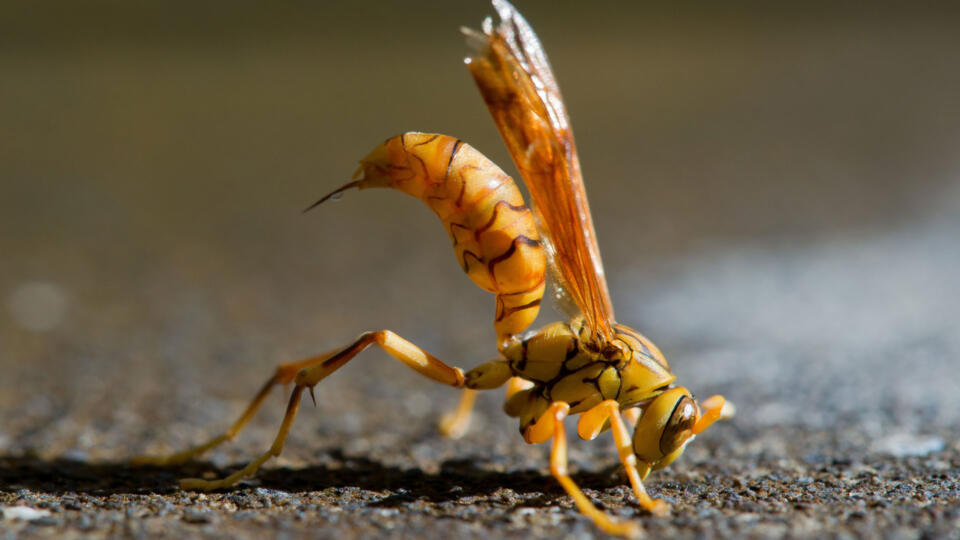
- These have the longest known lifespan for a wasp, with individuals living between six and 18 months.
- Its genus name, Polistes, means “city-builder,” referring to their papery nests of comb-like cells. The second-part of its Latin name, carnifex, literally means “to make flesh.” It was the word for a public executioner in Ancient Rome.
- They feed on nectar and caterpillars. They kill the caterpillars and then bring back balls of chewed-up caterpillar flesh to feed the larvae at the nest. Their jaws (mandibles) have teeth.
- The eggs, larvae, pupae and adults of Polistes carnifex are a traditional food for people in the Mexican state of Chiapas.
Goliath Birdeater
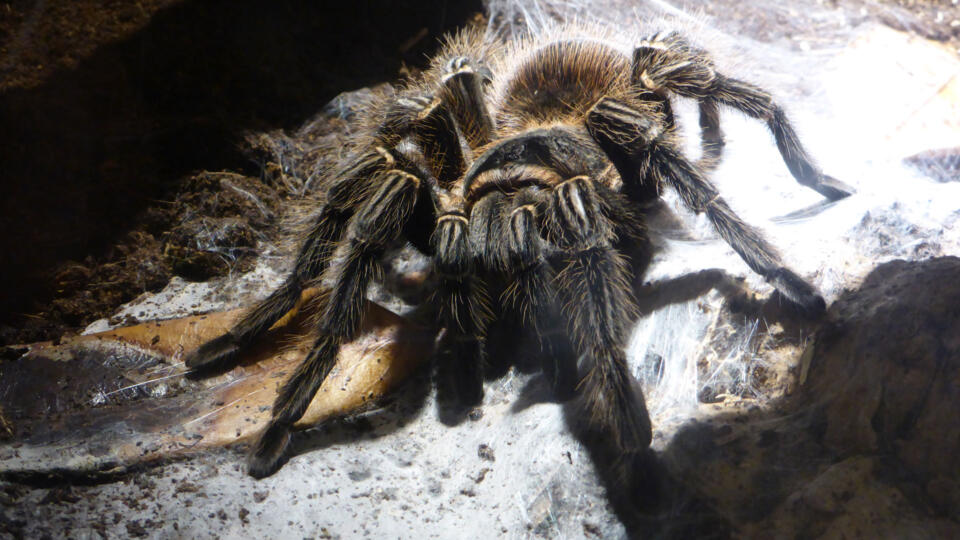
- True to its name, the Goliath birdeater is the largest living spider by weight (up to 6 oz., with a leg span of up to 12 inches). Females can live 15 to 25 years; males live just 3 to 6 years.
- While its regular diet consists of insects and amphibians, the tarantula will feed on birds and other land vertebrates occasionally. The spider’s name originated from an 18th-century engraving showing one feeding on a hummingbird.
- Like all tarantulas, for defense, the Birdeater is covered with hairs that act as an irritant similar to stinging nettles. They can even rub their legs together, launching the barbed tips of their hairs like little missiles that cause painful irritation in predators’ eyes. The Birdeater can also make a warning hissing sound—which sounds a bit like Velcro being pulled apart—by rubbing its hairs together. The noise can be heard by humans as far as 10 feet away.
- After the spiders kill their prey, they drag them back to the deep underground burrows where they live. They then use special digestive fluids to liquify their prey before slurping out their insides.
- When singed of their stinging hairs, wrapped in a banana leaf and cooked, Goliath Birdeaters make a traditional delicacy that tastes a bit like shrimp.
Episode 1: Nightmare in a Box
Sign in to watch the Warrior Wasp, the Executioner Wasp and the Goliath Birdeater in action. Can Adam and Rob withstand the pain?Episode 2 South Africa
Uroplectes Scorpion
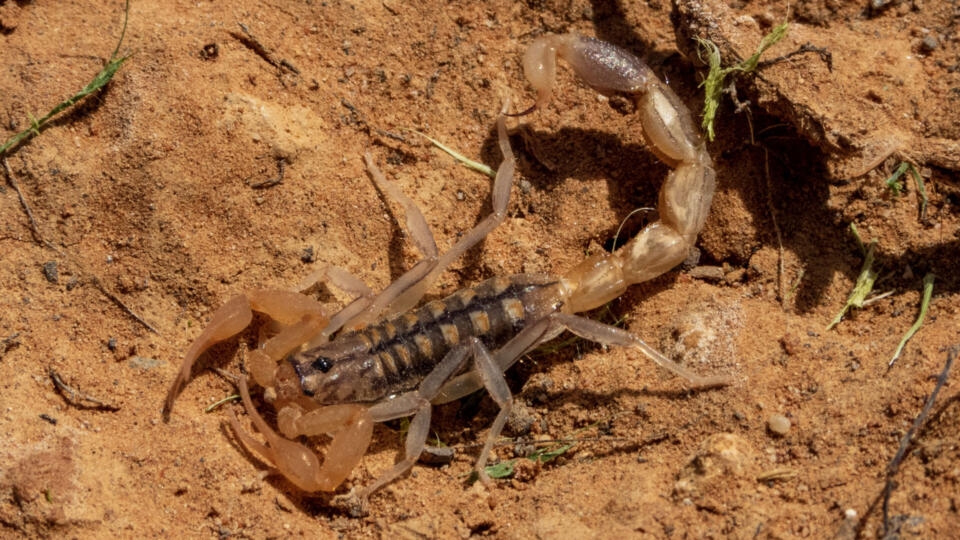
- Commonly known as lesser thick-tailed scorpions.
- There are 40 species, all native to sub-Saharan Africa, with the greatest diversity concentrated in South Africa. Species’ habitats can range from tropical forests to deserts. Many live under the bark of trees or fallen logs.
- Uroplectes run fast, with their tails spread out. When defending themselves, they sting repeatedly.
- A rule of thumb for determining how dangerous a scorpion is: Scorpions with thicker tails and smaller pincers (Uroplectes scorpions have both) tend to have more potent venom.
Lionfish
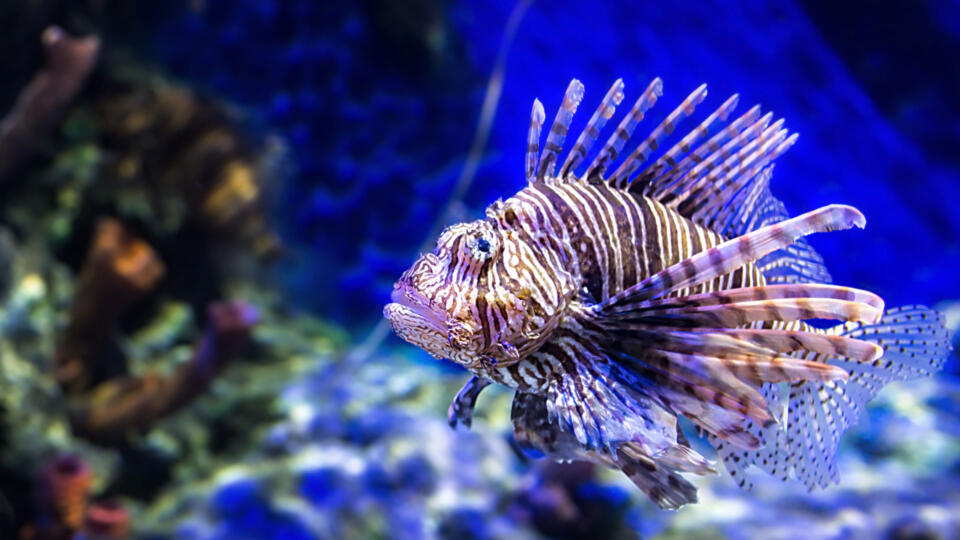
- The Red Lionfish, common in the Atlantic Ocean, is believed to be descended from former aquarium pets.
- The common Lionfish has a dorsal fin with 13 long venomous spines, used purely for defense; they hunt with their mouths.
- A mature female Lionfish releases around two million eggs a year.
- When hunting, Lionfish blow jets of water to disorient their prey before swallowing them in a single motion. They attack and consume their prey so quickly that their victims’ companions sometimes don’t even notice the attack occurred.
- Lionfish venom includes a neuromuscular toxin and a neurotransmitter called acetylcholine. The effects of the sting can last for days. Pain, sweating, trouble breathing and temporary paralysis can result.
Episode 2: Stinging Punishment
Sign in to watch the Uroplectes Scorpion, the Lionfish and more take on the Kings of Pain.Episode 3 Mexico
Harvester Ant

- There are hundreds of species of Harvester Ant; the name loosely describes ants whose behavior includes gathering seeds or fungus to store in their nests’ underground granaries.
- But one species stands out: the Maricopa Harvester Ant. They protect their nest mounds from wind erosion by building cemented caps on top of them. Each colony is home to as many as 20,000 ants.
- They sting with what is believed to be the most toxic insect venom in the world—25 times stronger than that of a honeybee’s sting, and 35 times stronger than the venom of a western diamondback rattlesnake.
- Just 12 harvester ant stings contain enough venom to kill a 4.5-pound rat. Pain from their sting can last eight hours.
- The Maricopa Harvester attacks its victim with a one-two punch: first it bites them, clamping down with its mandibles to give it a secure base from which to sting them multiple times.
- When foraging for food, Maricopa Harvester ants navigate by using the sun as a rudimentary compass.
Tarantula Hawk
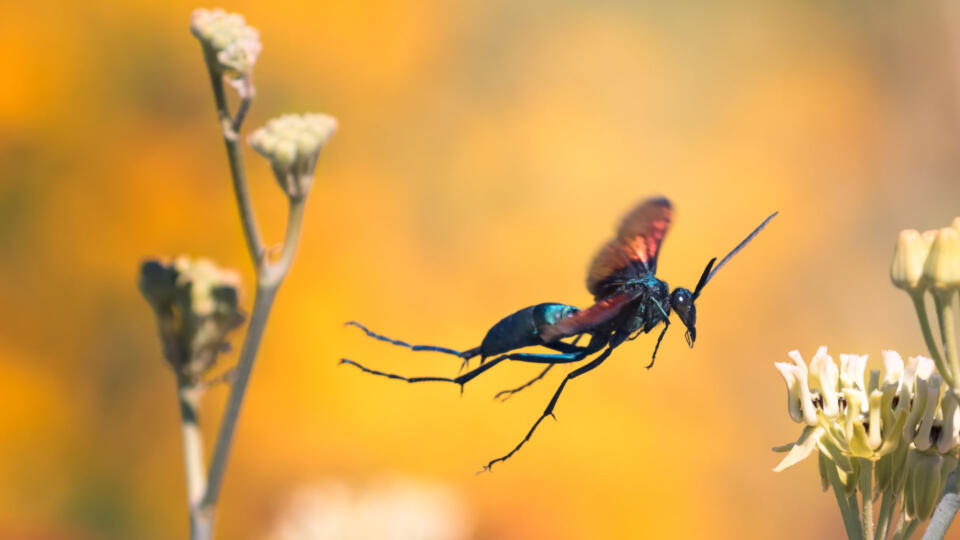
- There are several species of spider wasps that are known as tarantula hawks. The largest of these—Pepsis grossa—packs a legendarily painful sting. Considered to have the second-most-painful-to-humans sting of any insect, after the bullet ant.
- The tarantula hawk preys, ironically enough, on tarantulas. The female stings the tarantula between the legs, paralyzing it. She then drags it back to a nest and lays a single egg on it. When the egg hatches the larva burrows into the paralyzed spider and slowly eats it alive from the inside out.
- They are brightly colored, and go out of their way to be seen, flicking their wings around when they move on the ground.
- Only the females sting, and only the females prey on tarantulas. The adult female tarantula hawk has no known predators.
- Despite its painful sting, its venom is much less toxic than a honeybee's—perhaps because the goal of its sting is to incapacitate but not kill the tarantula.
Crown-of-Thorns Starfish

- More disc-shaped than a standard starfish, the crown-of-thorns starfish starts out its life with the five-armed symmetry typical of starfish, but eventually grows up to 23 arms. They range in size from 10 to 14 inches across and are covered with stiff, sharp spines.
- When taken from the water, their body fluid leaks out, causing them to “deflate”—but they will plump back up if returned to the water in time.
- Females can produce as many as 50 million eggs at a time.
- The crown-of-thorns’ defensive sting occurs when their spines pierce an animal’s tissues. The spines break off inside the starfish’s victims—in people, they can require surgical removal.
- The strength of its sting varies by region; in the Red Sea the sting is generally benign, but in the Pacific the stings are very painful. Its toxins can cause severe pain and persistent bleeding in humans, triggering swelling and nausea that can last for more than a week.
- The crown-of-thorns starfish has a peculiar way of eating. It molds its body to cover a section of its food—usually coral polyps—and then extrudes its stomach from its mouth to directly digest the polyps on the coral surface.
Episode 3: Fairy of Death
Sign in to watch the Harvester Ant, the Tarantula Hawk and the Crown-of-Thorns Starfish put the Kings of Pain through the ringer.Episode 4 Africa
Nile Monitor Lizard
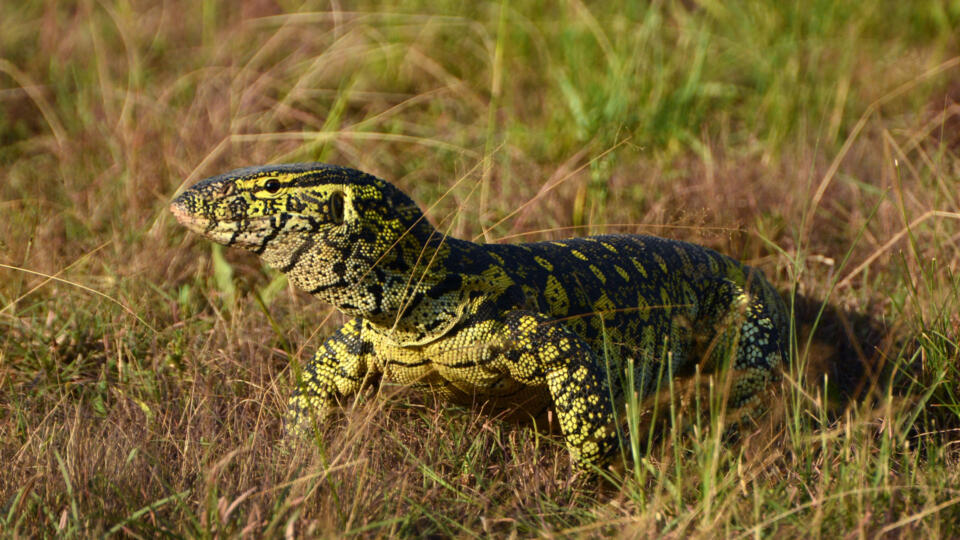
- Africa’s largest lizard, the Monitor lives throughout much of the continent. It is the second largest reptile found in the Nile—after the Nile crocodile. The Monitor can grow to up to eight feet long, but an average Nile monitor lizard is less than two feet long.
- They can run fast on land, climb well and are adapted to swimming, with nostrils on the top of their snouts. They are aggressive and will defend themselves with their teeth, claws and whip-like tail.
- Monitors can live more than 15 years.
- Monitor venom is thought to prevent blood clotting, leading to persistent bleeding and the onset of shock or rapid loss of consciousness in their victims.
Velvet Ant
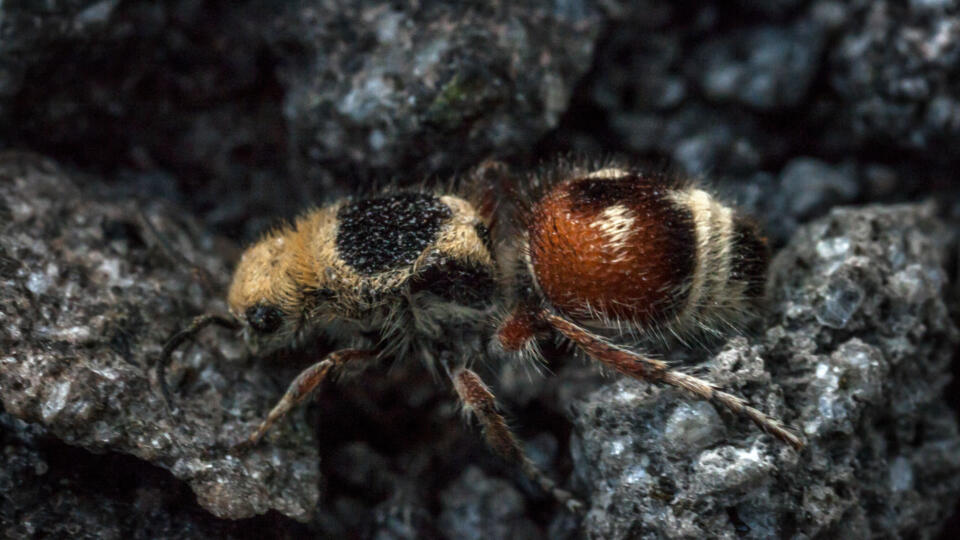
- Despite the name, it’s actually a wingless wasp—the females look like large, velvety ants.
- There are more than 3,000 species in the family commonly named velvet ants, more than 400 species in the North American southwest alone.
- Nicknamed the “cow killer,” although their stings have only been shown to be fatal in much smaller animals like lizards.
- Velvet ants aren’t aggressive and will emit an audible squeak to warn predators to stay away. Most velvet ants’ bodies have vivid contrasting colors to warn predators to avoid them.
- The velvet ant’s exoskeleton is more than 10 times as strong as that of a honeybee. According to one study, they had the most crush-resistance of any tested insect, with very few weak points.
Episode 4: World of Hurt
Sign in to watch the Kings of Pain grade the Nile Monitor Lizard and the Velvet Ant.Episode 5 Baja California
Scorpion Fish
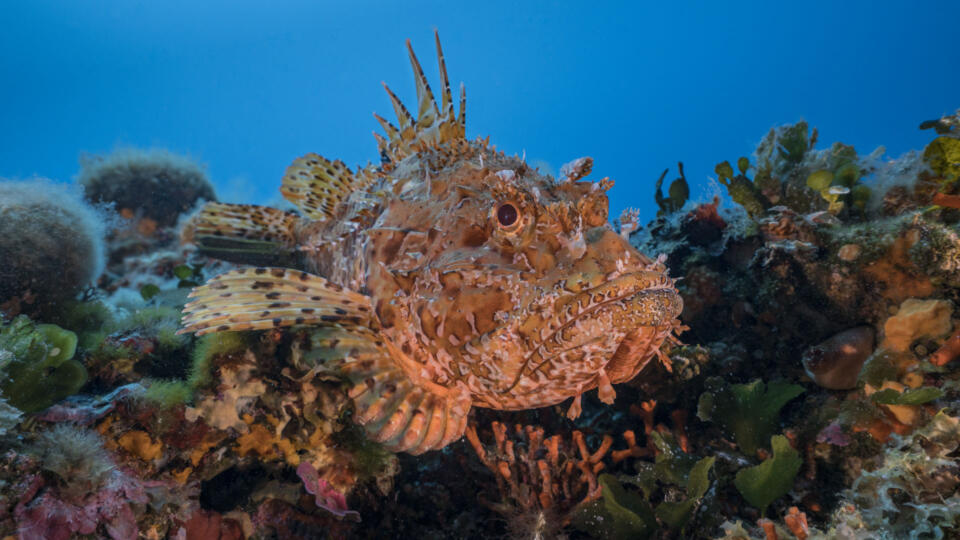
- There are hundreds of varieties of scorpionfish. The lionfish is a type.
- Averaging 12 to 17 inches long, they have a mottled coloration mixing red, brown, tan, white and lavender.
- Crabs and fish are their most important food. California scorpionfish have been observed to eat baby octopuses, but they work to evade larger octopuses, suggesting that the scorpionfish are sometimes hunted by them.
- Their sting comes from spines on their back coated with venomous mucous. The sting of a California scorpionfish feels like a rattlesnake bite, with throbbing pain, heat and numbness, as well as systemic nausea, faintness and clammy skin. Its venom is also toxic to the heart.
- Once the spines are removed, they’re good to eat, either fried or even as high-end sushi.
Toe Biter
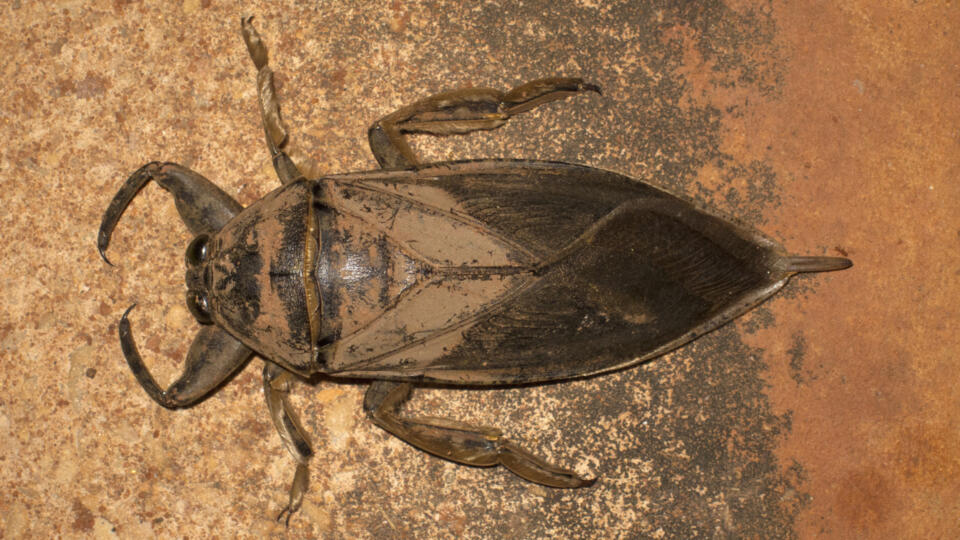
- There are hundreds of species of these giant water bugs worldwide, usually found in freshwater ponds and marshes. The largest, which can be more than 4.5 inches long, are found in North America.
- They are voracious predators, eating a wide range of creatures, including snails, tadpoles, fish and ducklings.
- Fried giant water bugs are a popular food in parts of Asia.
- In some species of toe-biter, the females lay eggs on the males’ wings; the fathers carry them around until they hatch. While carrying their young, the males do not mate—females, on the other hand, can seek new mates as soon as they’ve left the eggs with dad.
Episode 5: Point of the Dead
Can Adam and Rob withstand the pain of the Scorpion Fish and the Toe Biter? Sign in to watch the full episode now.Episode 6 Bali
Fire Urchin

- These sea urchins, which can be up to 9 inches in diameter, live in bays or lagoons on sandy or rubble bottoms at depths ranging from 0 to 150 feet. They feed on encrusting organisms on the sea floor, especially sponges.
- Their internal shell (called a “test”) is more flexible than other types of sea urchins, allowing the fire urchin to squeeze into crevices while searching for food.
- It has two types of spines: “hoof-like” non-venomous ones on its underside used for locomotion and short venomous ones on top, each with a prominent poison sac.
- A number of small crustaceans—including zebra crabs, squat lobsters and Coleman shrimp—can make their homes among the fire urchin’s poisonous spine.
Rove Beetle
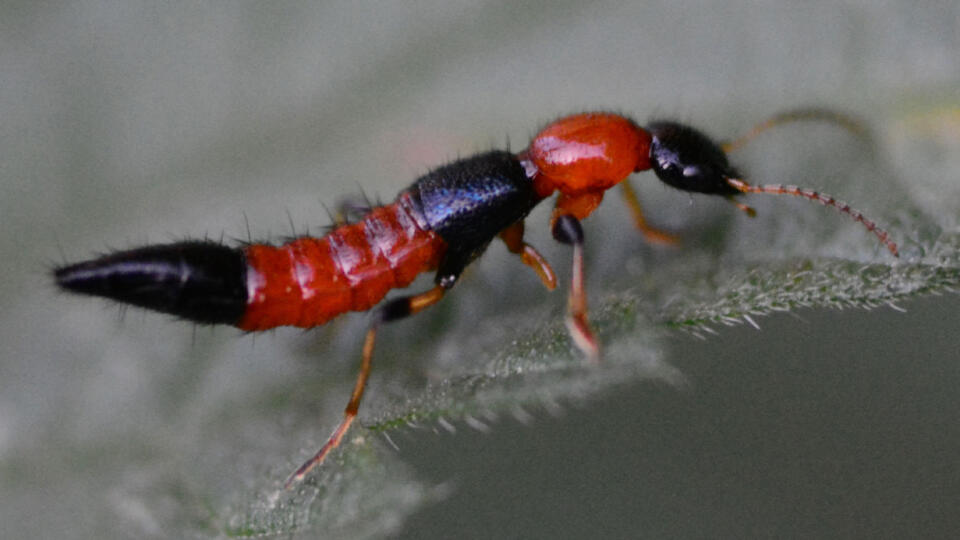
- Rove beetles may be the largest existing family of organisms, with more than 63,000 identified species.
- In general, rove beetles are notable for their shortened wing covers (compared to other beetles), which give them an earwig-like appearance. Poisonous rove beetles have striking coloration as a warning signal to potential predators.
- Rove beetle body fluids contain pedarin, a strong toxin more potent than cobra venom. Pedarin is chemically complex, and inhibits protein synthesis and prevents cell division. The latter trait makes it an attractive potential cancer treatment.
- Rove beetles don’t bite or sting. But when swatted, crushed or brushed away too harshly, the beetles leave streaks of poisonous goo on the skin. The poison, which can then be spread by touch, initially has no obvious effect; a rash and blisters begin to appear within 12 to 36 hours after contact.
- An article in the renowned British medical journal The Lancet suggests rove beetles could have caused the “plague of boils” that afflicted ancient Egyptians in the Biblical story of the exodus.
Episode 7 Amazon
Bullet Ant
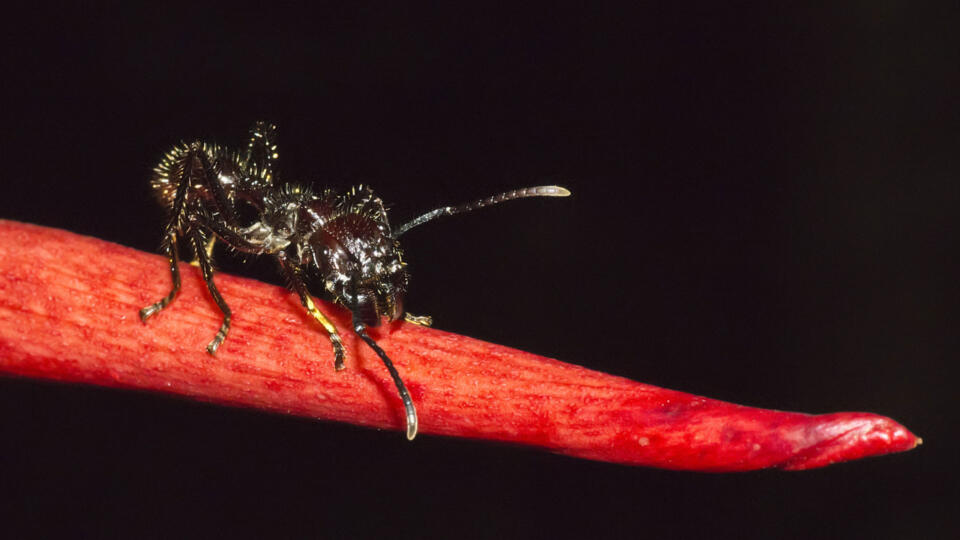
- Also called the “Lesser Giant Hunting Ant.” Regional nicknames, like “Bullet Ant” (or “Bala”) in Costa Rica, speak to the power of its sting. In Venezuela it’s called the “hormiga venticuatro”—the “24 ant”—referring to the full day of pain that follows its sting.
- Bullet ants are large: The workers measure between 0.7 and 1.2 inches long.
- Its sting, which currently ranks highest (4.0+) on the Schmidt sting pain index, can cause lymph-node swelling, edemas, elevated heart rate and blood in the stool.
- Bullet ant stings are used in men’s initiation rites by the Sateré-Mawé people, who live in the Brazilian amazon. They make mitt-like gloves out of woven palm leaves and attach sedated bullet ants to them, with stingers facing inside. The initiate places his hands inside them its and is stung dozens of times—a ritual the initiates endure 20 times over the course of several months.
Piranha
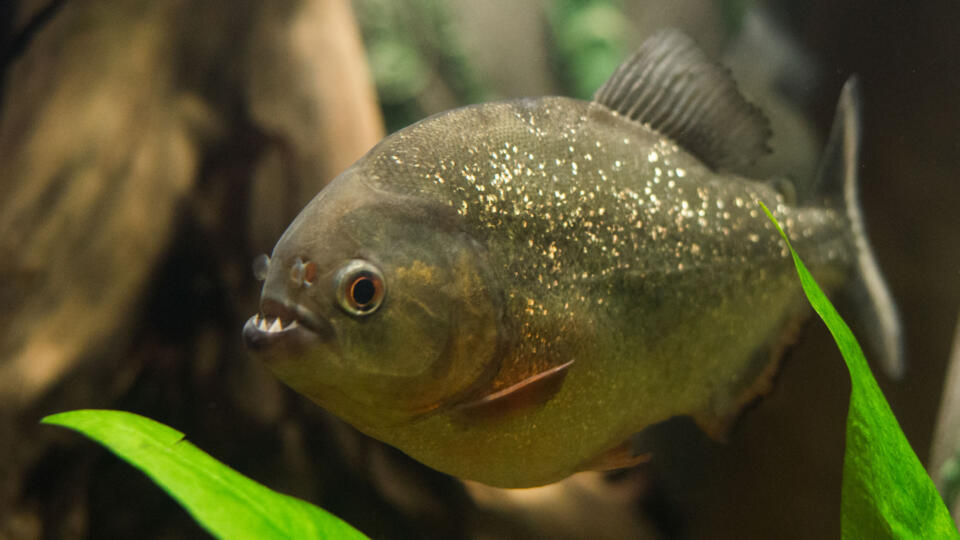
- Most are five to 14 inches long. Their triangular teeth are serrated and sharp, while their lower jaw muscles give the strongest bites of any bony fish. Piranhas’ sharp teeth make useful tools for humans; South Americans have used them for wood carving, hair-cutting and other activities.
- They eat mostly fish (and will occasionally cannibalize fellow piranhas), but they also eat other animals, including insects and other invertebrates. Piranhas also eat plants—leaves, seeds and fruits are a regular part of many species’ diets.
- When red piranhas attack (or are otherwise stressed), they produce a distinctive drumming sound by contracting special sonic muscles.
- When they attack humans, the resulting injury is often a single bite to the foot. But occasionally groups of stressed piranhas will attack a person (often a child), with sometimes fatal results.
- Piranhas’ dangerous reputation in the English-speaking world can be at least partly attributed to Teddy Roosevelt, who in 1913 watched a school of purposely trapped and starved piranhas attack and quickly skeletonize a cow. Roosevelt recorded this atypical behavior in his book Through the Brazilian Wilderness.
Episode 8 Indonesia
Giant Asian Centipede
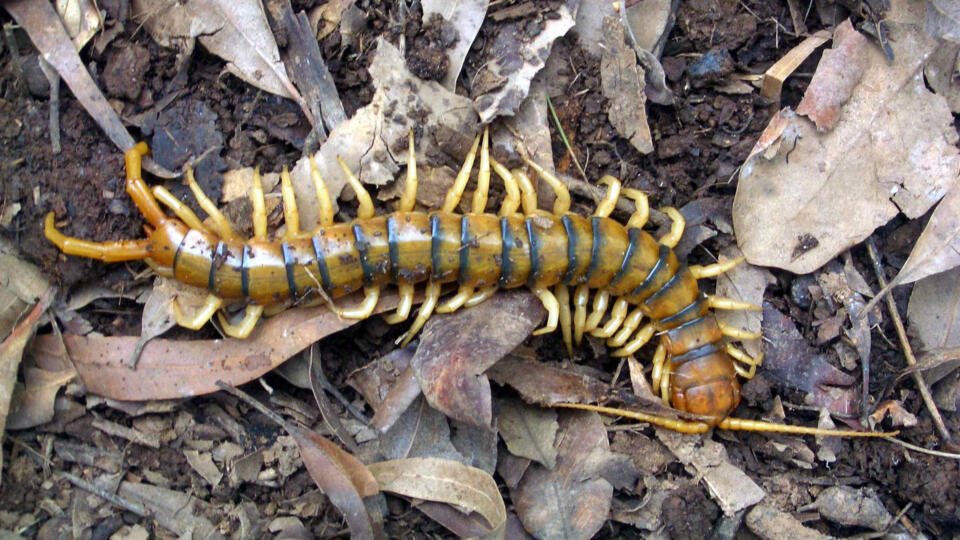
- Largest specimens may be up to 9 inches long. They usually have 21 or 23 pairs of legs.
- Its average lifespan is 2-3 years. It feeds on insects, snails and worms.
- Its bite can cause severe pain lasting for days.
- The crushed bodies of related species of centipedes are used in Chinese traditional medicine to combat conditions ranging from tetanus to kidney stones.
- Centipede venom contains several toxins. “Spooky Toxin” seems to refer specifically to a toxin isolated from the venom of the Golden Head Centipede—the type generally used in Chinese medicine (and a common pest in Hawaii). Research shows the toxin evolved to let centipedes simultaneously disrupt their prey’s cardiovascular, respiratory, muscular and nervous systems. The powerful toxin allows centipedes to be the rare predator capable of subduing prey bigger than they are.
- Venomous animals typically have to spend a lot of metabolic energy producing their venom, so they have evolved to use as little of it as possible to do its job.
Reticulated Python

- Generally considered to be world’s longest snake—reasonably reliable records are over 25 feet, with some not-fully-verified specimens over 30 feet. (Getting exact length measurements on a living python is tricky—only newly-dead or anesthetized specimens can be properly measured.)
- The reticulated python may be longer than the South American anaconda, but they are more svelte, with reticulated pythons weighing around half as much of anacondas of the same length.
- They live near water, using it for camouflage before ambushing their prey. They can often be seen swimming at sea and have colonized numerous Southeast Asian islands.
- They are constrictors, killing most of their prey by squeezing them to death. They can swallow prey up to half their length and their full weight. They feed on mostly birds and mammals, ranging from bats and tree shrews to deer and even bears.
- There are numerous reports of people strangled by pythons, though the pythons rarely succeed in swallowing the humans they’ve killed—the shoulders are tricky.
- Like most snakes, reticulated pythons are nearly deaf and have limited vision, relying on smell, touch and heat-sensing organs to stalk their prey and hide from predators. They communicate with vibrations and by leaving trails of pheromones.
- If there are no males around, a female reticulated python can reproduce by pathogenesis, creating fertilized eggs that are clones of herself.
- Their bites, while not venomous, are still dangerous.


